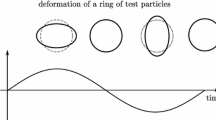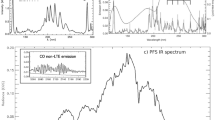Abstract
A Space Debris Impact Risk Analysis Tool (SDIRAT) was developed and implemented to assess the orbital debris impact risk on a specified target in Earth orbit, in terms of flux, relative velocity, impact velocity, direction of the incoming particles, debris mass and diameter. Based on a deterministic approach, SDIRAT uses a realistic orbital debris population where each representative particle is identified by its rectangular coordinates (position and velocity) at a reference epoch. Using this information, some geometrical algorithms were developed and implemented to evaluate the contribution of each particle to the incoming flux. The position of the particle with respect to a specified target drives the selection criteria to reject, or select, it as a possible projectile. On the other hand, the relative velocity vector can be used to estimate the impact direction of the incoming flux. SDIRAT was conceived as a general tool for a variety of scenarios, such as low circular and elliptical orbits, up to the geosynchronous ring. This paper presents some examples of possible applications, including the computation of the incoming debris flux on SAX (low Earth orbit), SIRIO (geosynchronous orbit) and the IRIS upper stage (elliptical orbit). Other applications assess the impact risk for the Soviet Radar Ocean Reconnaissance Satellites Cosmos 1900 and Cosmos 1932.
Similar content being viewed by others
References
J.O. Cappellari et al., editors. Mathematical Theory of the Goddard Trajectory Determination System. NASA/GSFC Report, GSFC X-582-76-77, 1976.
R.M. Goldstein, S.J. Goldstein and D.J. Kessler. Radar Observation of Space Debris. Planetary and Space Science, 46: 1007-1013, 1998.
E.I. Grinberg, B.V. Grigoryev, V.S. Nikolaev, N.A. Sokolov and A.I. Nazarenko. Interaction of Space Debris with Liquid Metal Circuit of RORSAT Satellites. In Proceedings of the Second European Conference on Space Debris, ESA SP-393, pages 273-277, 1997.
D.J. Kessler. Derivation of the Collision Probability between Orbiting Objects: The Lifetimes of Jupiter's Outer Moons, Icarus, 48: 39-48, 1981.
D.J. Kessler, J. Zhang, M.J. Matney, P. Eichler, R.C. Reynolds, P.D. Anz-Meador and E.G. Stansbery. A Computer-Based Orbital Debris Environment Model for Spacecraft Design and Observations in Low-Earth Orbit. NASA TM-104825, 1996.
H. Klinkrad. Collision Risk Analysis for Low Earth Orbits. Advances in Space Research, 13: 177-186, 1993.
H. Klinkrad, J. Bendisch, H. Sdunnus, P. Wegener and R. Westerkamp. An Introduction to the 1997 ESA MASTER Model. In Proceedings of the Second European Conference on Space Debris, ESA SP-393, pages 217-224, 1997.
C. Pardini and L. Anselmo. Space Debris Impact Risk Analysis Tool (SDIRAT). CNUCE-B4-1998-015, CNUCE Institute, Pisa, Italy, 1998.
C. Pardini, L. Anselmo, A. Rossi, A. Cordelli and P. Farinella. The 1997.0 CNUCE Orbital Debris Reference Model. In Spaceflight Mechanics 1998, Advances in the Astronautical Sciences Series, Vol. 99. Univelt Inc., San Diego, CA, pages 1041-1058, 1998.
A. Rossi, C. Pardini, L. Anselmo, A. Cordelli and P. Farinella. Effects of the RORSAT NaK Drops on the Long Term Evolution of the Space Debris Population. In 48th International Astronautical Congress, Paper IAA-97-IAA.6.4.07, Turin, Italy, 6-10 October, 1997.
E.G. Stansbery and T.J. Settecerri. A Comparison of Haystack and HAX Measurements of the Orbital Debris Environment. In Proceedings of the Second European Conference on Space Debris, ESA SP-393, pages 59-63, 1997.
E.G. Stansbery, T.J. Settecerri, M.J. Matney, J. Zhang and R. Reynolds. Haystack Radar Mesurements of the Orbital Debris Environment; 1990-1994, JSC-27436. Lyndon B. Johnson Space Center, Houston, TX, 1996.
R.Walker, S. Hauptmann, R. Crowther, H. Stokes and A. Cant. Introducing IDES: Characterising the Orbital Debris Environment in the Past, Present and Future. In Spaceflight Mechanics 1996, Advances in the Astronautical Sciences Series, Vol. 93. Univelt Inc., San Diego, CA, pages 201-220, 1996.
Author information
Authors and Affiliations
Corresponding author
Rights and permissions
About this article
Cite this article
Pardini, C., Anselmo, L. Assessing the Risk of Orbital Debris Impact. Space Debris 1, 59–80 (1999). https://doi.org/10.1023/A:1010066300520
Issue Date:
DOI: https://doi.org/10.1023/A:1010066300520




